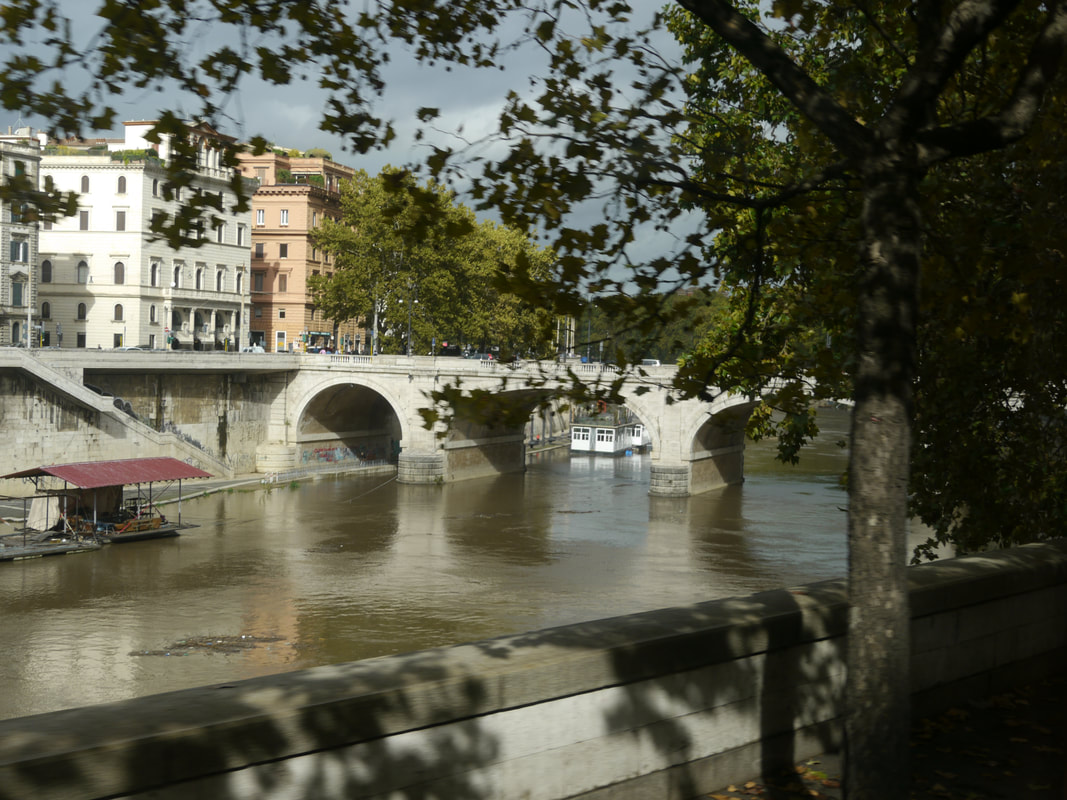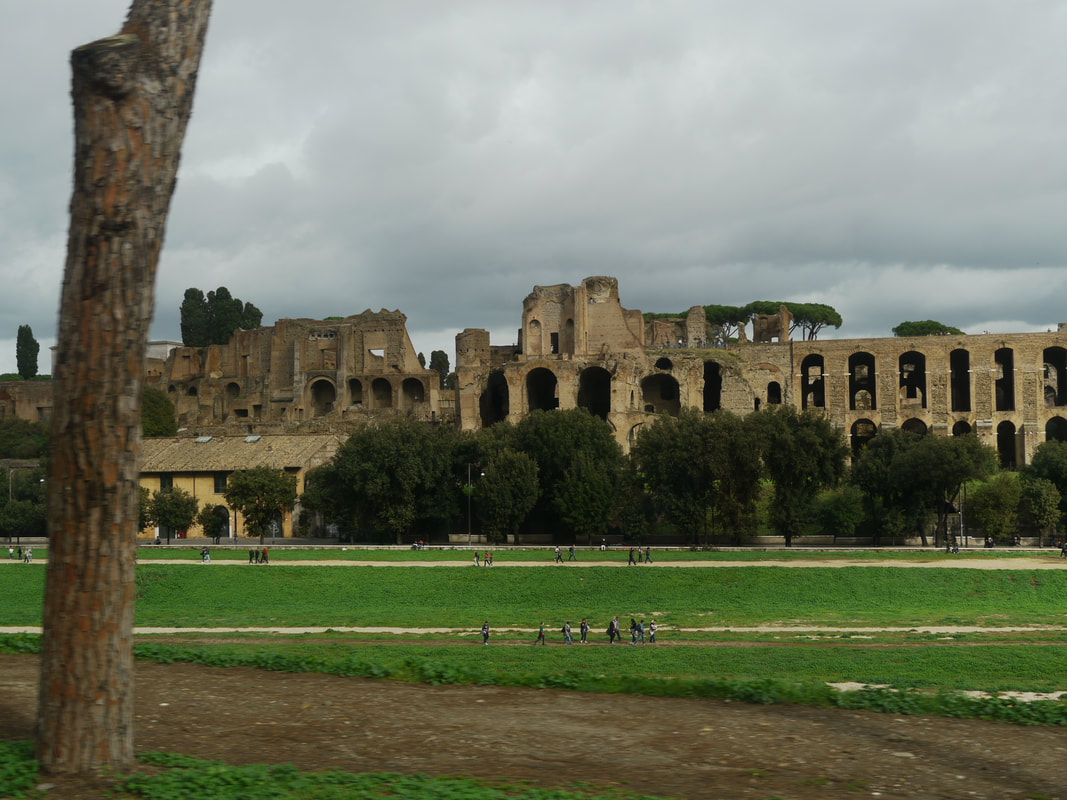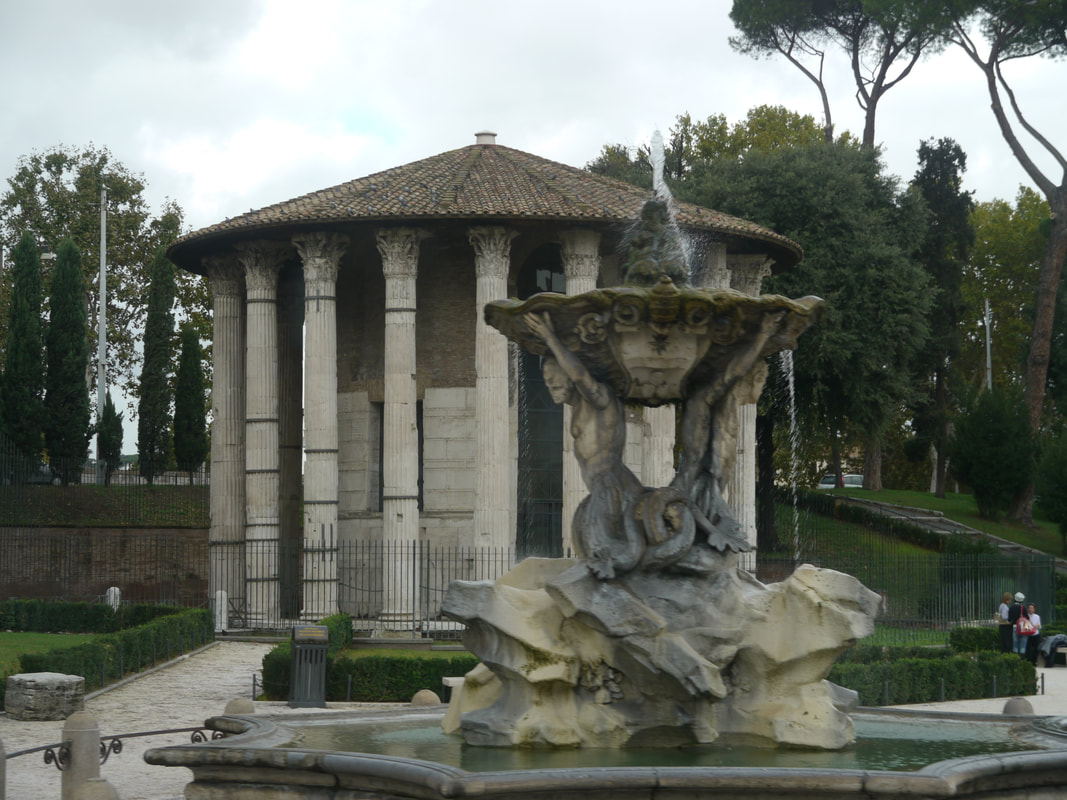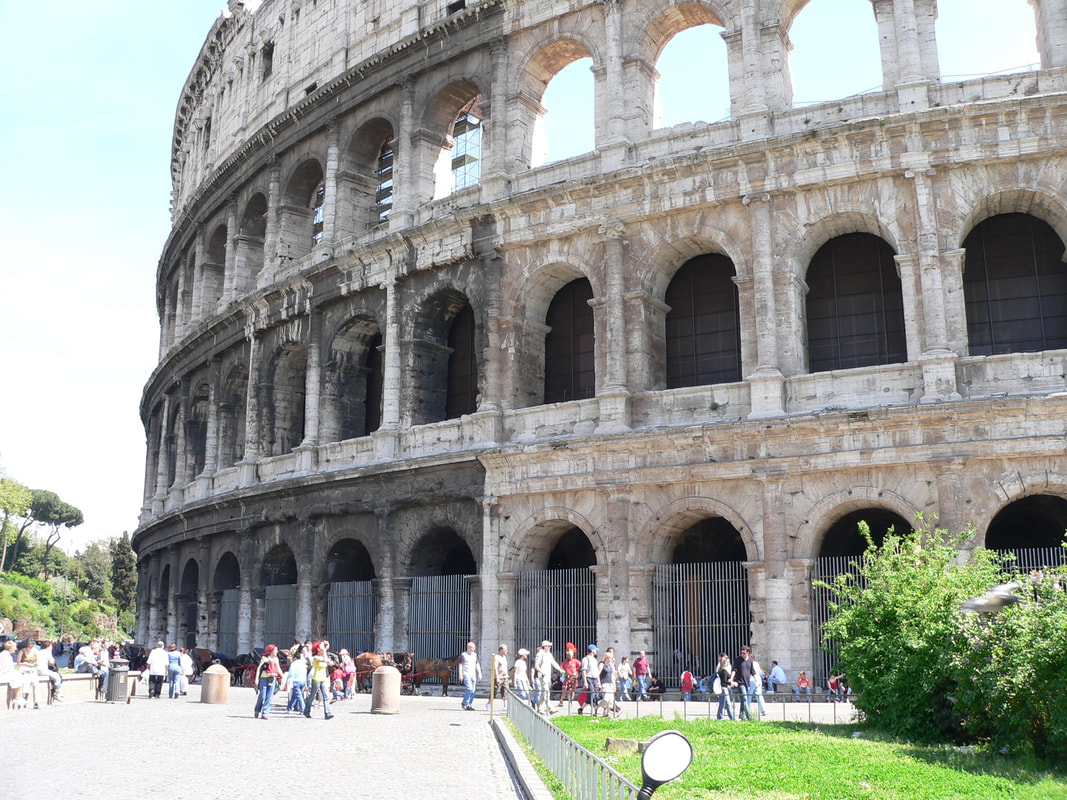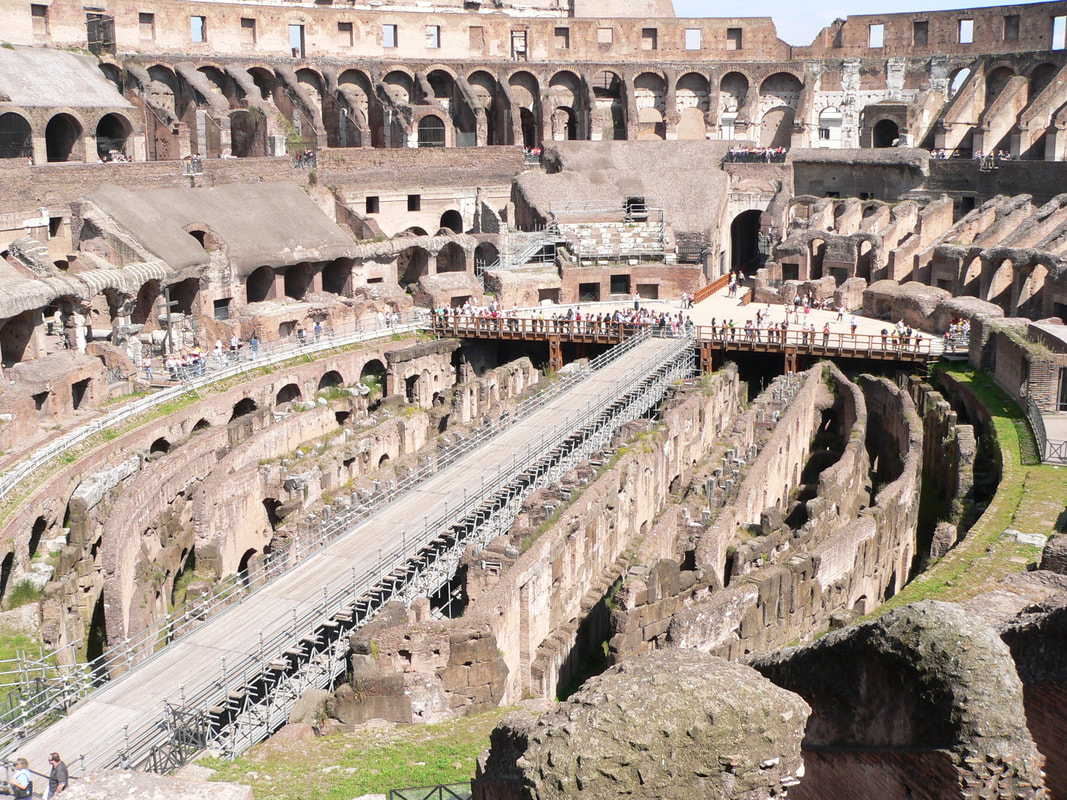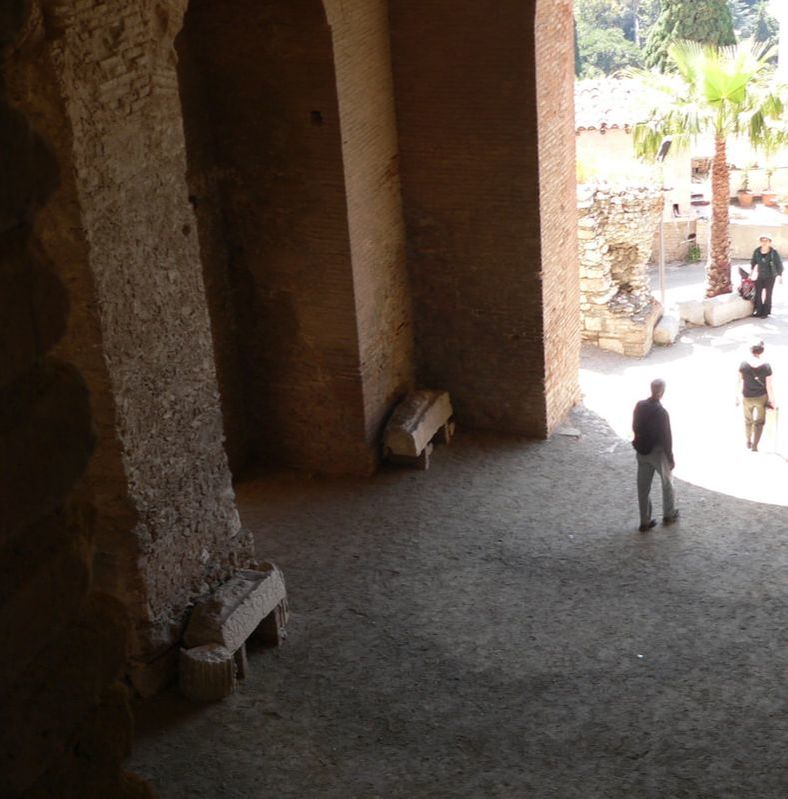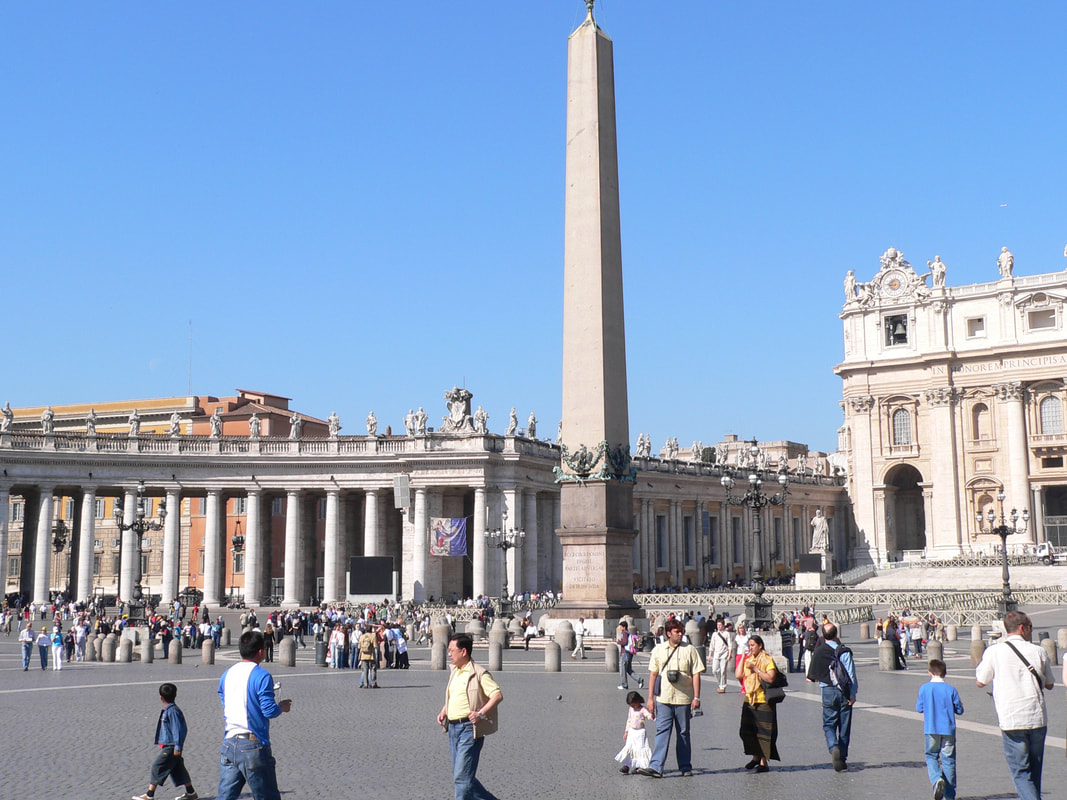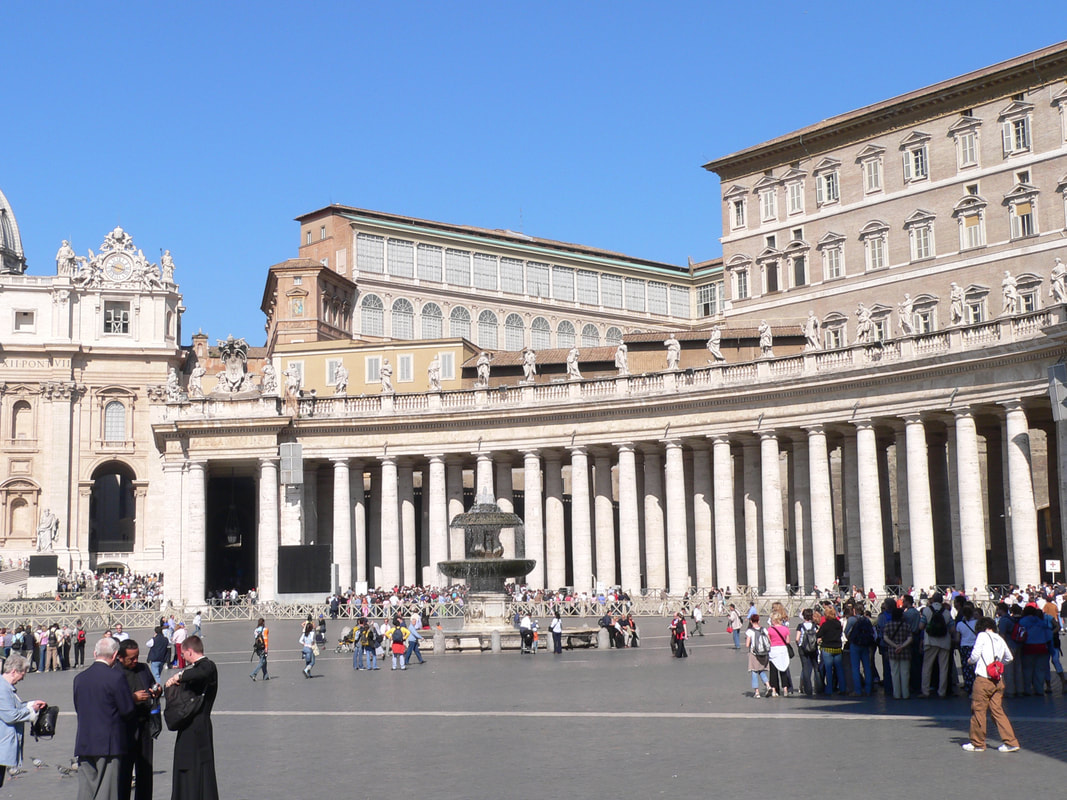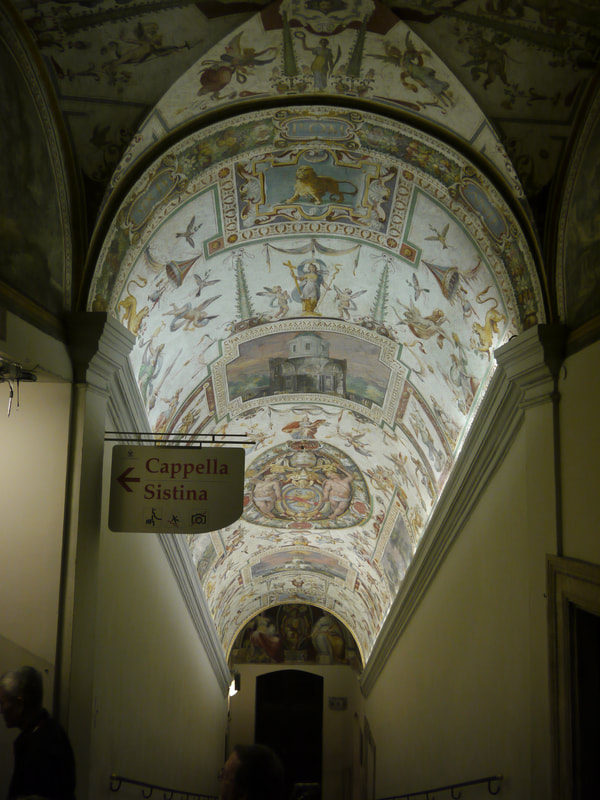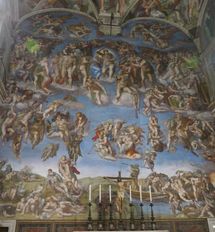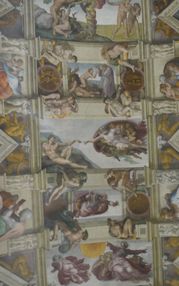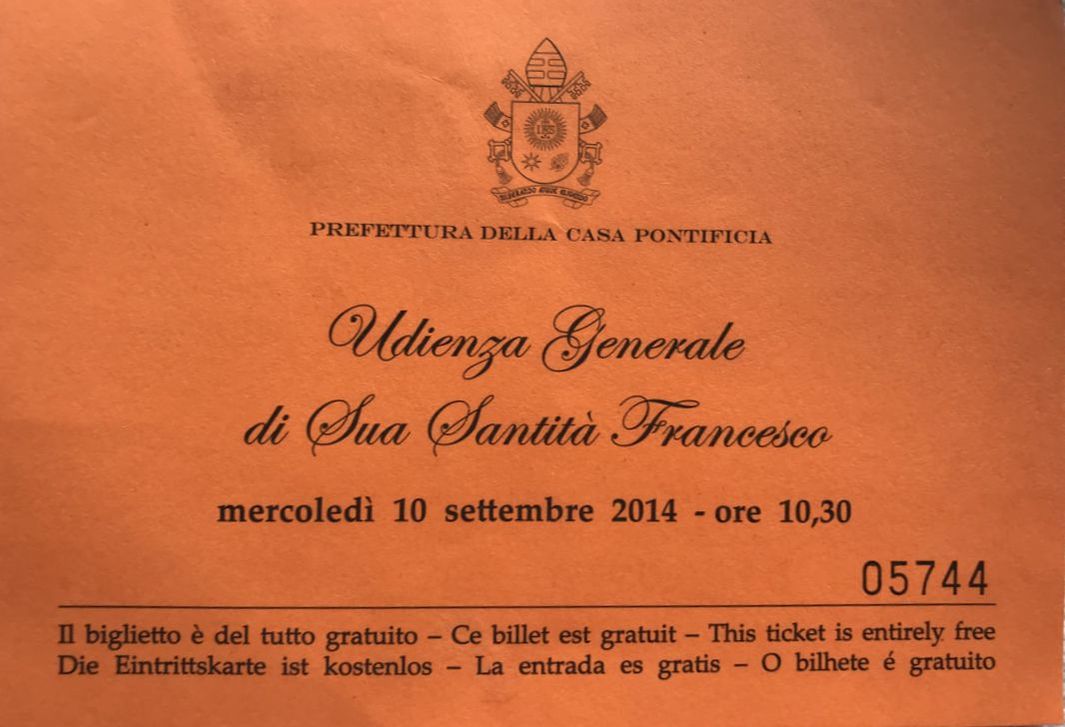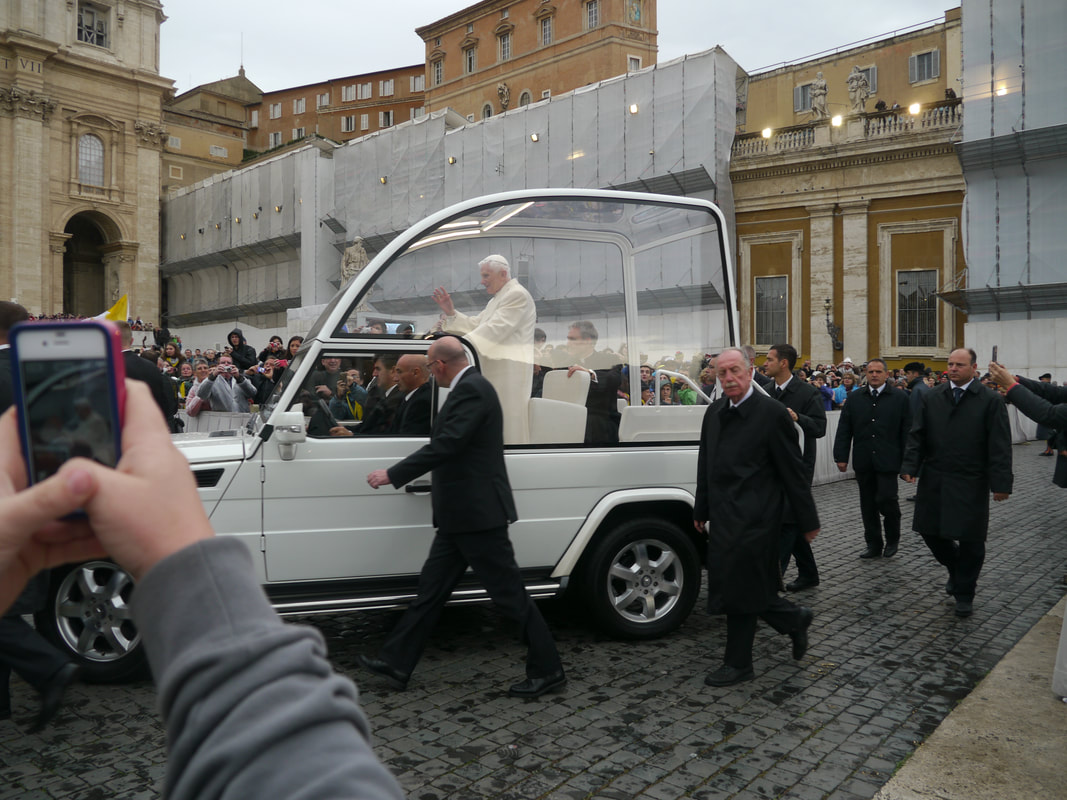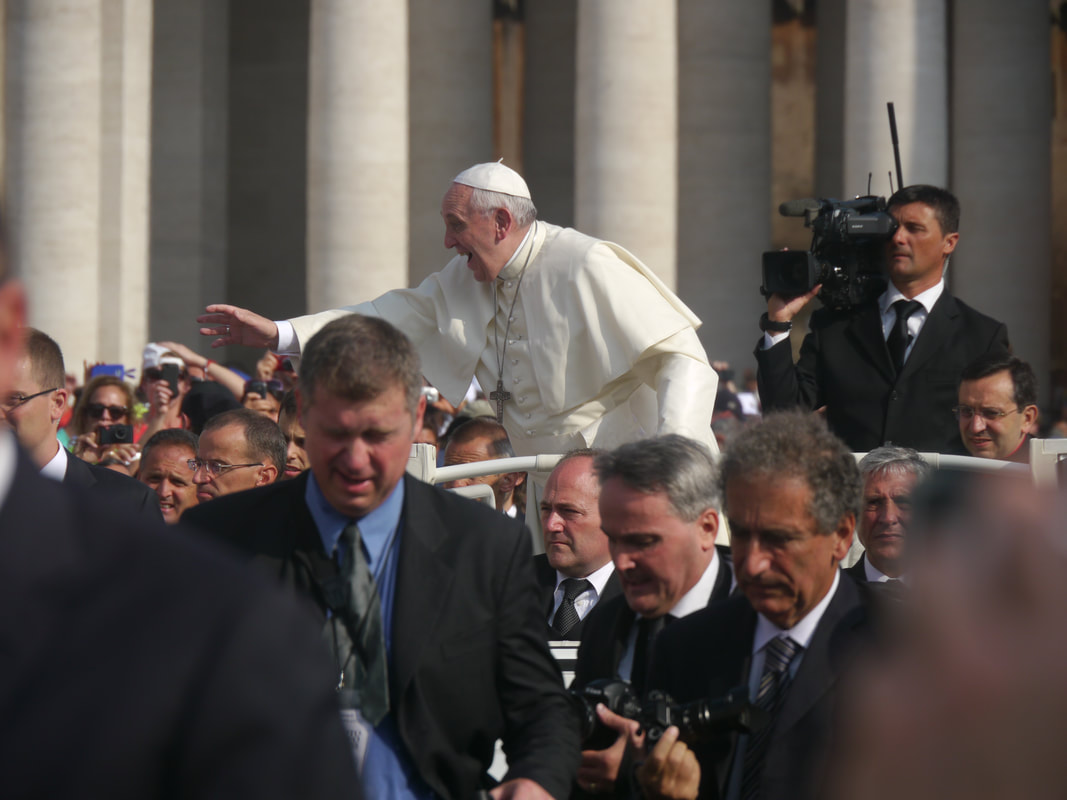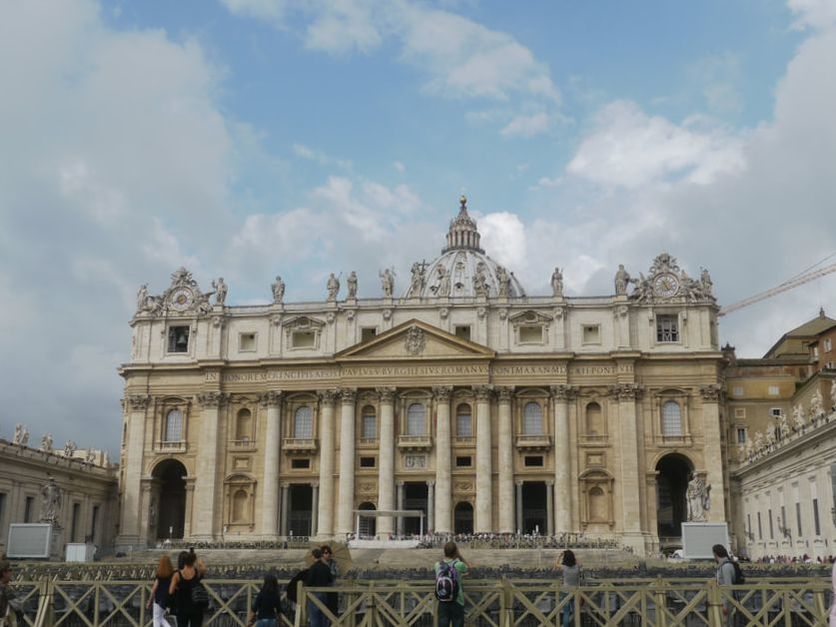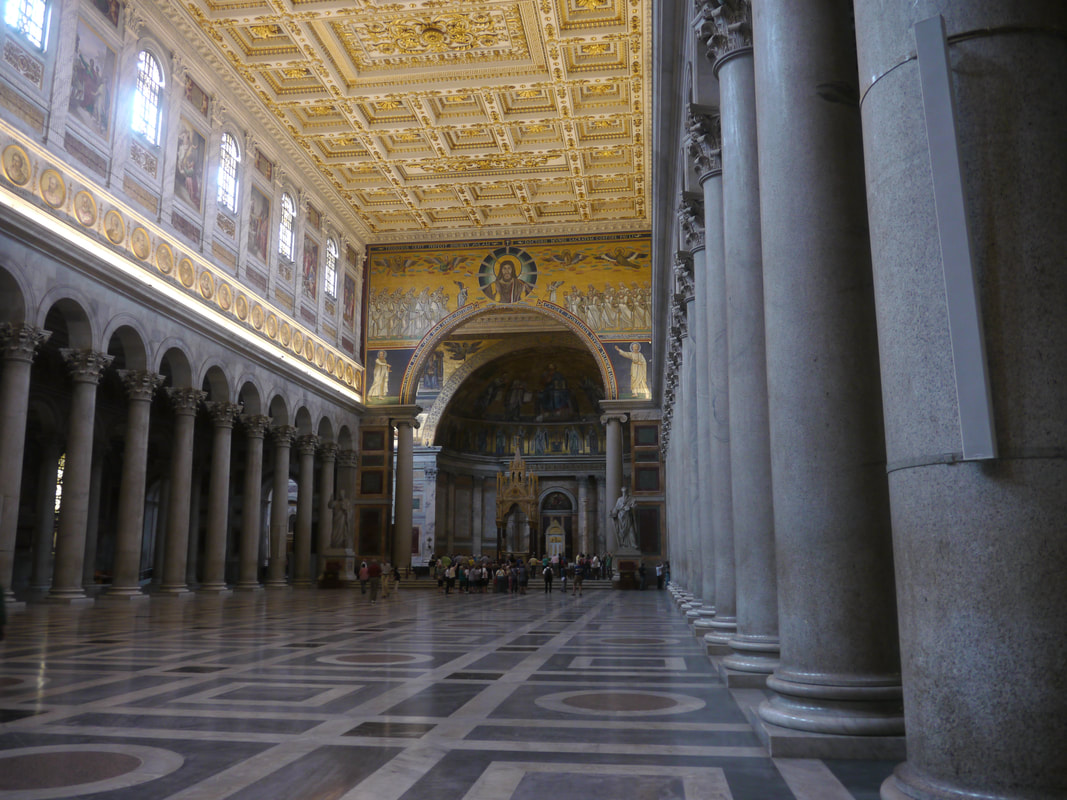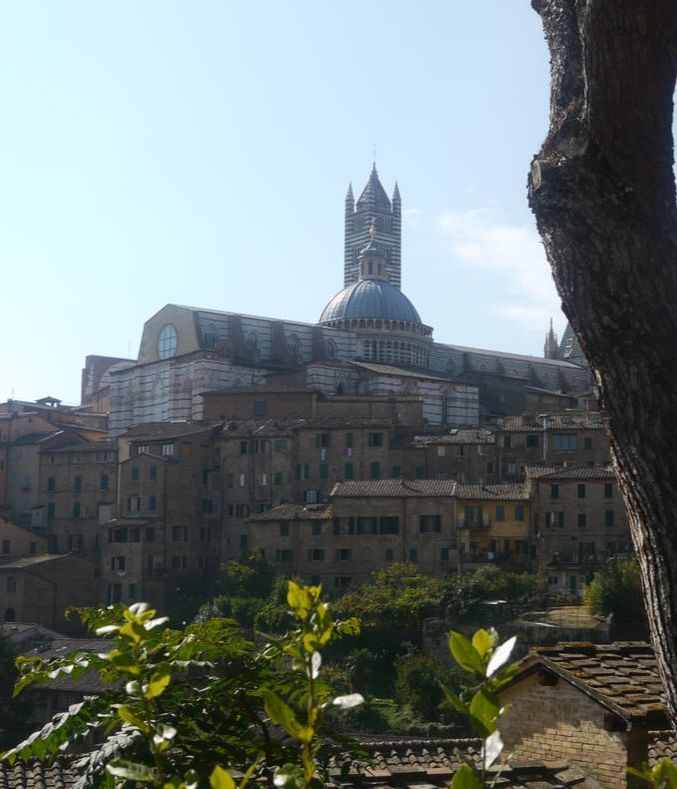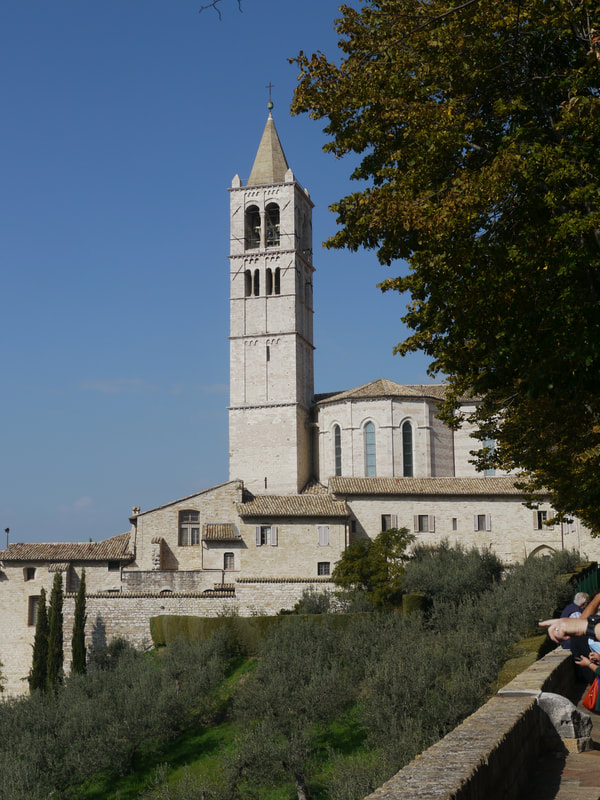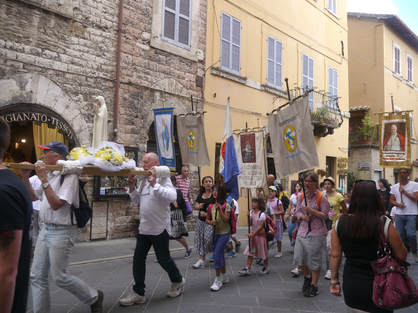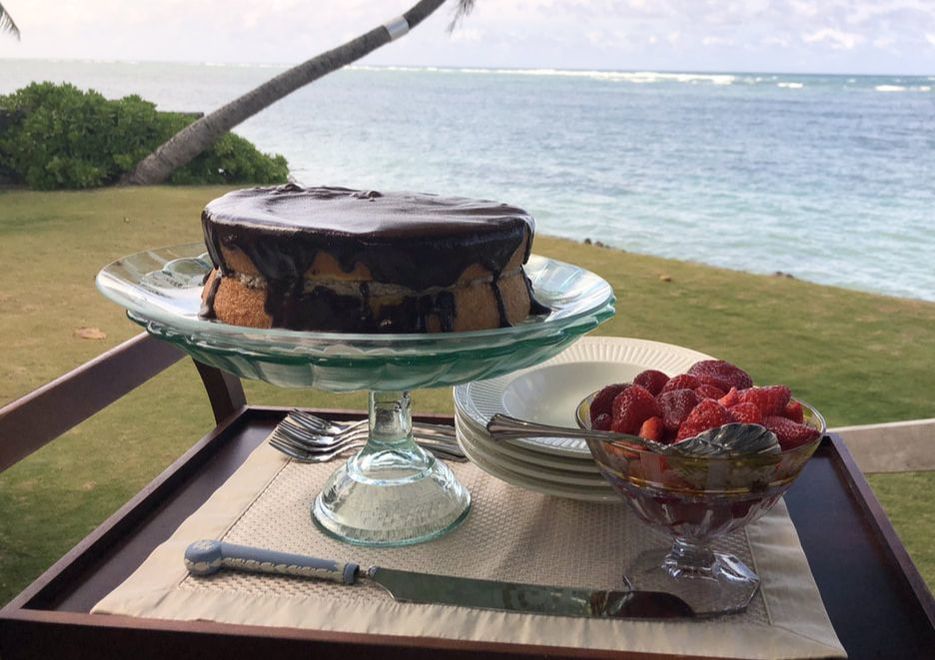The full moon lingers
Over St. Peter’s on a
Warm summer morning.
At last we have arrived in Rome. Located on the Tiber River less than twenty miles inland from central Italy’s western coast, this capital city, headquarters of the Roman Empire for centuries, remains a thriving modern metropolis. As one of the most famous places on earth, Rome can be a bit overwhelming to visitors. It might be best to take a somewhat chronological approach to this ancient city and face the fact that one cannot see every landmark in a single trip.
According to legend, Rome was founded by the twins, Romulus and Remus in 753 BC and has thus enjoyed nearly twenty-eight centuries of history. One must also keep in mind that what eventually became the Roman Empire, circling all the land around the Mediterranean and stretching as far as Britain, was strongly influenced by the classical Greek culture that preceded it. This influence will be evident when one visits two of the most significant ancient Roman sites: The Forum and the Coliseum.
The Forum, also known by its Latin name,
Forum Romanum, is a large rectangular outdoor area in central Rome containing the ruins of numerous temples, basilicas, arches, statues, monuments, residences and promenades as well as archeological digs. With millions of visitors a year, The Forum is one of the most important tourist sites in the world.
The Forum area has been in use since about 800 BC when it served as a burial place for local residents. Later, modeled on a Greek agora, The Forum became a public meeting and market place in the center of the city. Here people gathered for religious, political, legal and social activities. When Rome became a Republic in 509 BC, the Senate met at the Forum. Visitors to The Forum today can view the ruins of the many temples and monuments built, and in many cases, rebuilt over the ensuing centuries. An interesting example is the Curia Julia, a Senate house completed by Augustus Caesar in 29 BC and repurposed as a Catholic Church in 630 of the Current Era.
At the Forum, one can witness the evolution of the earlier Greek-inspired architectural style to the later Romanesque. Classical Greek architecture features symmetrical buildings and temples made of marble using post and lintel construction, with stairs leading to a columned porch holding up a triangular pediment, often decorated with life-like human statues. Around the time of the Republic, the Romanesque architectural style began to evolve and continued into the Christian Era, morphing into the Byzantine style. Romanesque buildings feature massive, thick walls, sturdy pillars, round arches, domes and towers. Building materials might include brick, stone or concrete. At the Forum, the Arch of Titus, a Triumphal Arch built in 81 of the Current Era by Domitian, exhibits the heavy, strong Romanesque architectural style.
The most famous example of massive Imperial Roman architecture is The Colosseum, constructed centuries later than The Forum. Built by the Roman Emperors Vespasian and Domitian in the First Century of the Current Era, this enormous public arena exhibits only vestiges of a Greek amphitheater. The prototype for every football stadium in America, this enormous oval gathering place was used for similar purposes: public spectacles. This is the place where chariot races, gladiator fights, wild animal hunts, and yes, persecution of early Christians occurred.
The largest amphitheater ever built, the Colosseum stands 150 feet high with four stories and eighty ground level entrances to accommodate the huge crowds of 50,000 to 80,000 spectators. Fortunately for visitors today, the Colosseum is located just east of the Forum, and tickets and tours to both venues are easy to obtain on line. Italians are not fussy about their antiquities, and visitors are free to wander around and observe both sites up close. Although it is possible to visit both the Forum and the Colosseum in a single day, I would recommend studying all the details of both locations in advance in a good guidebook and taking the time to give yourself a truly memorable experience of both places.
After all, we cannot know in advance what our experience of an ancient and beautiful place will be—which temple, which statue or which arch will capture our imagination. We need time to linger and let the power of history and art have its way with us. When I visited the Colosseum, a lower area where gladiators waited before entering the arena for combat and martyrs waited to face the lions had been opened up, and this dark and shadowy area could be viewed from above.
Summer light streams down
To the dark place where martyrs
Waited for lions.
|
|
Time marches on even in Italy, birthplace of the Renaissance. Although this dynamic rebirth of the artistic and philosophical values of the classical Greek and Roman periods began in Florence, it didn’t take long to reach Rome. Nowhere are the artistic values of the Renaissance more evident than at the Vatican.
An independent state located within the city of Rome, the Vatican covers 110 acres and houses a population of 1,000. It is an ecclesiastical monarchy ruled by the Pope. Approximately six million visitors are welcomed at the Vatican each year to view the Vatican Museum, experience St. Peter’s Basilica and or participate in a Papal Audience.
Located adjacent to St. Peter’s, the Vatican Museum is the largest museum complex in the world. It is comprised of one thousand museums and galleries, including the Egyptian Museum, tapestries, gardens, the Raphael Rooms decorated with exquisite frescoes, and of course the Sistine Chapel, featuring the world-famous ceiling and upper wall frescoes of The Last Judgment by Michelangelo.
To visit the Vatican Museum, one must obtain tickets in advance. Choices will include large or small group tours. Our first visit to the Vatican Museum was a large group tour which entailed long lines and a cattle stampede-like rush through the Sistine Chapel with our necks craned backward for a quick glimpse of Michelangelo’s masterpiece. Thrilling though that was, we were grateful for the opportunity to visit the museum, including the Sistine Chapel, a few years later with a small group of pilgrims, one of whom was the Bishop of San Jose, the Most Reverend Patrick McGrath.
On this second visit, our group was allowed half an hour alone in the Sistine Chapel after the museum had closed. On this occasion, we were not only able to admire the intricacies of the very complex and majestic Last Judgment, but we also had the leisure to observe the earlier upper wall panels by Botticelli depicting scenes from the lives of Moses and Christ And the magnificent Cosmatesque floor (named after the Cosmati family of mosaic artists,) decorated with concentric circular mosaic patterns, was not even visible on our first visit to the Chapel. Travel brings us memories that linger forever. The half hour I spent in the Sistine Chapel remains one of the peak experiences of my life.
Visitors to any of the Vatican’s treasure troves must be aware that the Vatican has a dress code. As guests will be entering sacred spaces, they are expected to dress appropriately. Both males and females are required to have their upper arms, legs and torsos covered. No shorts, sleeveless or strapless dresses, tank tops, flip flops or bare midriffs allowed. The Vatican is not interested in what you wear at home in the summer time, and their dress code is not negotiable. This applies to an outdoor Papal Audience as well as a tour of St. Peter’s.
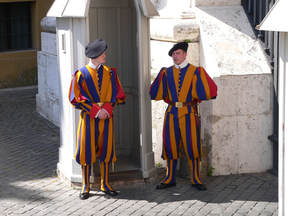
No matter what your personal religious, spiritual or even atheistic views may be, a Papal Audience, referred to as a General Audience, is an event worth experiencing. And a Papal Audience is free, though a ticket for the specific day is required. General Audiences usually take place on Wednesday mornings at about 10 AM in St. Peter’s Square and last about ninety minutes. Thousands of people attend, so it is best to arrive early to get comfortable seating where you might get a chance to see Pope Francis up close. He zips around up and down the various isles in his Pope Mobile before the event begins, and when we attended, he stopped several times to kiss babies along the way. You may also get a chance to view the Swiss Guards, the Pope’s personal security team, in their colorful red, blue and yellow Renaissance style uniforms.
A General Audience is not a Mass. It is a weekly gathering of the Catholic community and friends. This gathering will include prayers, blessings, including blessings of newly married brides and grooms in their wedding attire and a homily, a brief commentary by the Pope in about ten different languages. A large number of Cardinals will also be in attendance, and scripture readings in various languages will occur. St. Peter’s Square can be hot in the summer, cold in the winter and rainy at times, so come prepared. We have attended two General Audiences, one with Pope Benedict XVI and one with Pope Francis. Both were fascinating, joyful events filled with people from around the world, celebrating a brief moment of human solidarity, friendship and love.
As I have mentioned, the Vatican is the perfect showcase for Renaissance art, and St. Peter’s Basilica is its most famous example. While Renaissance art and architecture often retain the Classical Greek and Roman elements of symmetrical construction with stairs and columns leading to a structure decorated with human-like marble sculptures, the Renaissance eliminated the Classical love for simplicity. Indeed, elaborate decoration and gilding is the essence of Renaissance architecture. The use of a massive central dome, introduced by the Romans, is also a feature of Renaissance construction. And St. Peter’s is indeed massive.
Considered the largest church building in the world, St. Peter’s Basilica covers 240,000 square feet, stands 448 feet high and is 730 feet long and 500 feet wide. St. Peter’s can accommodate 60,000 people. Church tradition says that St. Peter and St. Paul were both martyred in Rome in the year 64 during the reign of Emperor Nero. Both saints were buried in Rome, and a much earlier and smaller church was constructed in the 300s to preserve St. Peter’s remains.
Centuries later, the Catholic Church leaders decided to build a more magnificent memorial to St. Peter, the Church’s first Pope. This decision occurred when the Renaissance, with its love for complexity and ornate décor was in full swing. Some scholars have observed that the opulence of the basilica’s size and decoration may have been a response to the Protestant Reformation and in particular a shout out to the Puritans, who detested excessive decoration as the work of the devil. In any case, the construction of St. Peter’s began in 1506 and was completed in 1626. Today it is a World Heritage Site, and archeological studies suggest that St. Peter’s remains may indeed rest in the crypt.
|
|
Outside the ancient
Roman walls, thunder and hard
Rain at St. Paul’s tomb.
|

St. Peter’s is only one of many glorious churches and basilicas in Rome, all of which are worth visiting, especially St. John in the Lateran and St. Mary Major. I was moved by the time I spent in another Major Basilica, St. Paul’s Outside the Walls. Emperor Constantine himself was responsible for the construction of this ancient church, created in the Fourth Century to house the martyred remains of St. Paul. The church was added to over the centuries and stood for 1,435 years until it was destroyed by fire in 1823. It was reconstructed as an exact copy, using some of the salvaged materials, and completed in 1840. One feature of the church that I found interesting was the cameo paintings around the upper walls of every Pope in the history of the Church, from St. Peter to the current Pope Francis.
Our time in Rome and the Vatican has come to a close, and summer’s end is near. I hope you will return to Italy in “real life” someday soon. I trust that you have enjoyed our virtual visits to Milan and Venice as well as Rome, but there is so much more in Italy to experience. The lovely Tuscan countryside, the ancient walled city of Siena, warm and gorgeous Sicily, (the Western birthplace of pasta,) and the magical Umbrian town of Assisi, home of the world’s most popular saint, are all places you will never forget.
The August moon glows
Over brown brick Siena
As church bells ring out.
|
|
|
|
St. Clare, surrounded
By olive trees, overlooks
All of Umbria.
|
What is it about Italy that lingers like a warm, sweet aroma or a precious dream? Maybe the answer is that Italians, even in sophisticated modern cities like Rome, still live in loving partnership with nature and with human history. Italians have not been seduced by fast food, corporate values or upwardly mobile snobbery. Their culture has thrived in the same warm and beautiful place since the beginning of time, and Italians are grateful for the land and its bounty. The ancient Mediterranean diet is still one of the healthiest in the world, and though Italians love their wine and cheese, alcoholism and high blood pressure are rare in Italy. And contemporary Italians continue to love beauty and art.
Italians are not in a hurry. Living each day with family, friendships, meaningful work, good food and conversation are what matter. It is not customary in Italy to create unnecessary stress by overscheduling oneself or multitasking. Each day has its own leisurely rhythms, and each moment has value. This is the culture that produced Constantine, Cicero, Petrarch, Bocaccio, Dante, Michelangelo and Leonardo da Vinci. Italians have proven to the world that it is possible to make lasting contributions to the betterment of mankind without destroying our beautiful earth or abandoning our humanity.
As we say “Arrivederci Roma,” I will leave you with a recipe for a lovely dessert that is not Roman but Sicilian in the hopes that you will visit Italy’s sunny south when you can. The name of this dessert is Cassata alla Siciliana, or Sicilian Cake. This ancient dessert is comprised of two layers of golden sponge cake with a ricotta cheese filling flavored with chopped dark chocolate and small bits of candied fruit. This recipe is inspired by a memory I have of wandering the cobblestone streets of Taormina and viewing a stunning display of colorful candied fruits glittering in the afternoon sunlight in the display window of a small family owned shop. How wonderful, I thought, that an entire family can support themselves for generations by creating gorgeous candied fruits from the nearby orchards. And their patrons in turn will create pastries and cakes that in their own way are living works of art. This is Italy.
Cassata alla Siciliana
To learn more about Cassata alla Siciliana and other Italian pastries, I encourage you to review An Italian Tea in the World of Tea Parties section of myteaplanner.com. I hope you will also read In Defense of Fruitcake: Fruitcakes and Candied Fruit in the December Calendar of Tea Parties section of our website. Here you will find recipes for making your own candied fruits. You can also make this project very easy for yourself by using my niece and co-author, Kathleen Pedulla’s simple and perfect recipe for Cassata in our Italian Tea menu using a frozen pound cake. The recipe I am sharing here includes three elements: Golden Sponge Cake layers called genoise in French, referring to a cake that originated in Genoa, Italy, before the invention of baking powder, relying only on beaten eggs for leavening; a Ricotta cheese filling containing candied fruits, bits of chocolate and pine nuts; and a Dark Chocolate Glaze.
For the Golden Sponge Cake:
- 6 large eggs, slightly warmed
- 1 cup sugar
- 1 cup flour
- ¼ teaspoon salt
- 1 ½ teaspoons vanilla extract
- 6 tablespoons unsalted butter, melted and cooled
- Cooking spray for the pans
For the Ricotta Filling:
- 1 pound (16 ounces) ricotta cheese
- ½ cup powdered sugar
- ¼ teaspoon cinnamon
- 2 tablespoons grated or finely chopped bittersweet chocolate
- ½ teaspoon vanilla extract
- ¼ cup finely chopped candied orange peel, or other candied fruits
- 2 tablespoons lightly toasted pine nuts or chopped pistachios
- 2 (or more) tablespoons orange liqueur, optional
For the Chocolate Glaze:
- 6 ounces semi-sweet or bittersweet chocolate, chopped. (A 6-ounce package of chocolate chips will work.)
- 1 stick (1/2 cup) of unsalted butter
Preheat oven to 350° F
Special equipment: 2 nine-inch round cake pans lined with parchment paper, hand-held electric mixer, 2 medium sized metal mixing bowls, medium sized sauce pan or double boiler, small glass bowl, sieve or flour sifter, rubber spatula, cooling racks, wooden spoon, large glass measuring cup, kitchen knife or offset spatula, decorative cake plate or cake pedestal
Makes: 8-16 servings
- Prepare the Golden Sponge Cake: Spray two round cake pans with cooking spray, cut 2 rounds of parchment to fit the bottoms of the pans and spray the parchment. Melt the butter in a glass bowl in the microwave and set it aside to cool. Bring a pan of water to a simmer and maintain the simmering water on low heat while you prepare the egg mixture.
- In a medium sized metal bowl, combine the eggs and sugar and whisk with an electric mixer to combine. Set the bowl over the pan of simmering water and stir the egg mixture until it is warm and the sugar is dissolved. Remove the bowl from the pan and beat the egg mixture on medium speed for 10-15 minutes until it has tripled in volume.
- Sift the flour and salt together in a medium sized bowl with a sieve or flour sifter. Stir the vanilla extract into the melted butter. Using a rubber spatula, fold the flour mixture into the egg mixture a little at a time just until combined and no flour is visible.
- Stir one fourth of the flour mixture into the butter mixture and fold the butter mixture quickly into the batter. Pour the batter into the prepared pans and smooth the tops with the spatula. Bake in the preheated oven for 20-25 minutes until golden and a knife or toothpick inserted in the center comes out clean. Cool on wire racks.
- Prepare the Ricotta Filling: Combine the ricotta and sugar in a medium sized mixing bowl and stir with a wooden spoon. Add the remaining filling ingredients and stir until well combined. (Feel free to add a couple of tablespoons of orange liqueur if you wish.)
- Assemble the Cassata: Prepare the Chocolate Glaze by melting the 6 ounces of chopped chocolate and the butter in a large glass measuring cup in the microwave at 30-second intervals, stirring after each interval until the mixture is smooth. Remove the cooled cake layers from the pans and peel off the parchment.
- Place one cake layer, top side down on a decorative cake plate or cake pedestal. Carefully spread the Ricotta Filling over the cake layer. Center the remaining cake layer over the filling and press gently. Pour the Chocolate Glaze over the top of the Cassata and let it drip over the sides. Refrigerate until ready to serve, and refrigerate any leftovers.


